The
Hydrologic Instrumentation Facility (HIF) is a groundbreaking development in water science, monitoring and research. As the only facility of its kind in the U.S. and one of just three globally, it plays a critical role in managing the nation’s water resources. Blending scientific functionality with architectural sophistication was a key challenge in its design, especially given its location on the University of Alabama, Tuscaloosa campus. The facility's design draws inspiration from both the timeless aesthetic of campus architecture and the innovative functionality required for advanced research.
Building Architecture
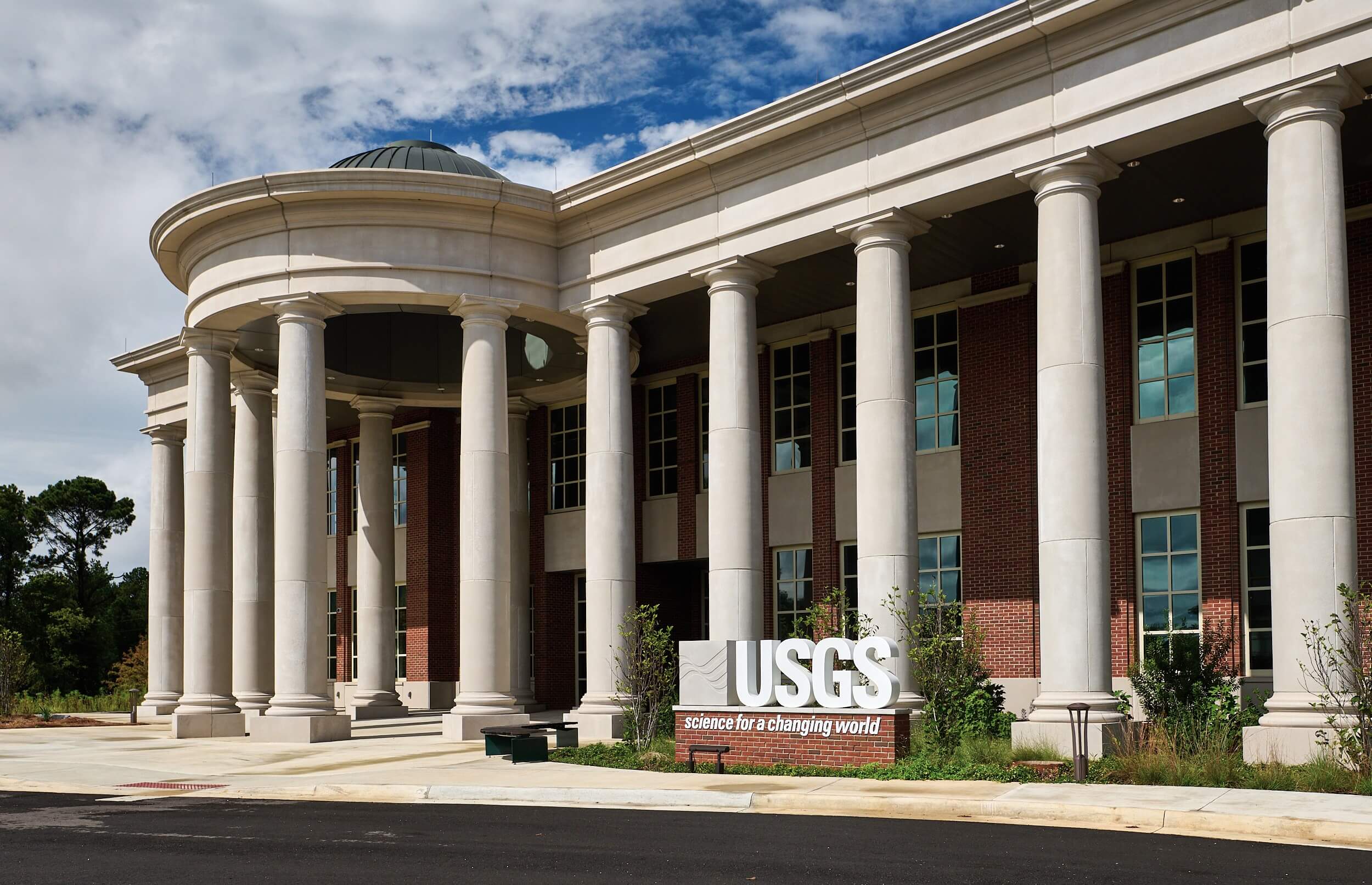
Located on the historic University of Alabama, Tuscaloosa campus, the HIF’s exterior complements nearby buildings. Stanley Consultants’ architects designed the modern laboratory facility to blend elements of downtown Chicago warehouse architecture with influences from the Marshall Field building. Red brick, cast stone cornices and precast concrete columns integrate the design into the campus' neoclassical aesthetic. This careful integration allows the HIF to harmonize with its surroundings while remaining a fully functional facility for modern scientific research.
Community Integration and Educational Synergy
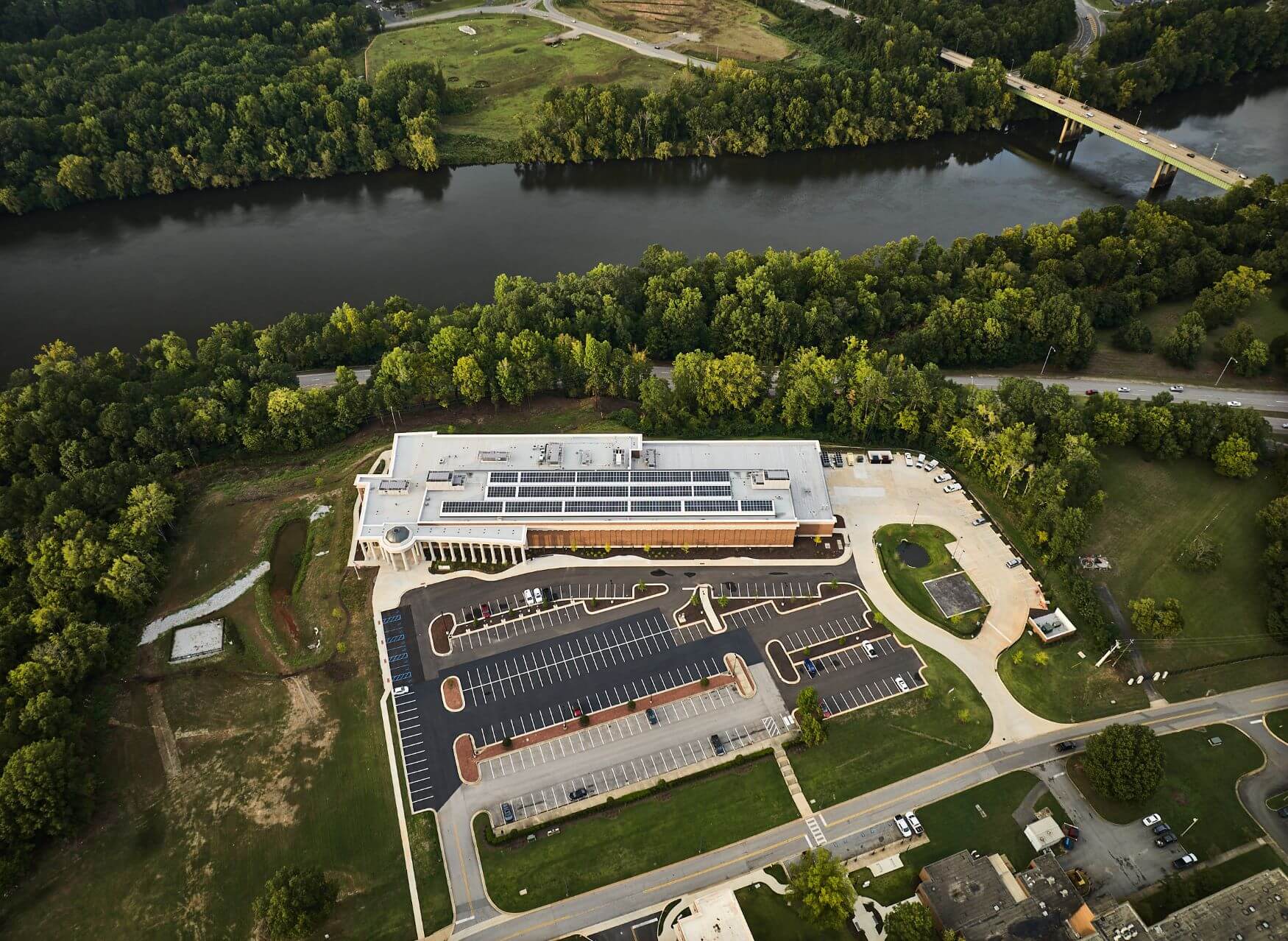
Situated within the university’s campus near the National Oceanic and Atmospheric Administration (NOAA) National Water Center, the HIF fosters collaboration between the United States Geological Survey (USGS), the University of Alabama and other research entities. For decades, USGS and NOAA have collaborated over long distances, but the HIF’s move put them in close proximity, opening opportunities for the USGS and UA to collaborate and bring students into that relationship. Students benefit from hands-on learning, bridging academia and real-world water science applications. The HIF encourages interdisciplinary collaboration across water science, technology and academia. This harmony between architecture, engineering and research leads to advances in hydrology, positioning the HIF as a key contributor to the future of water management.
A Modern Take on Tradition
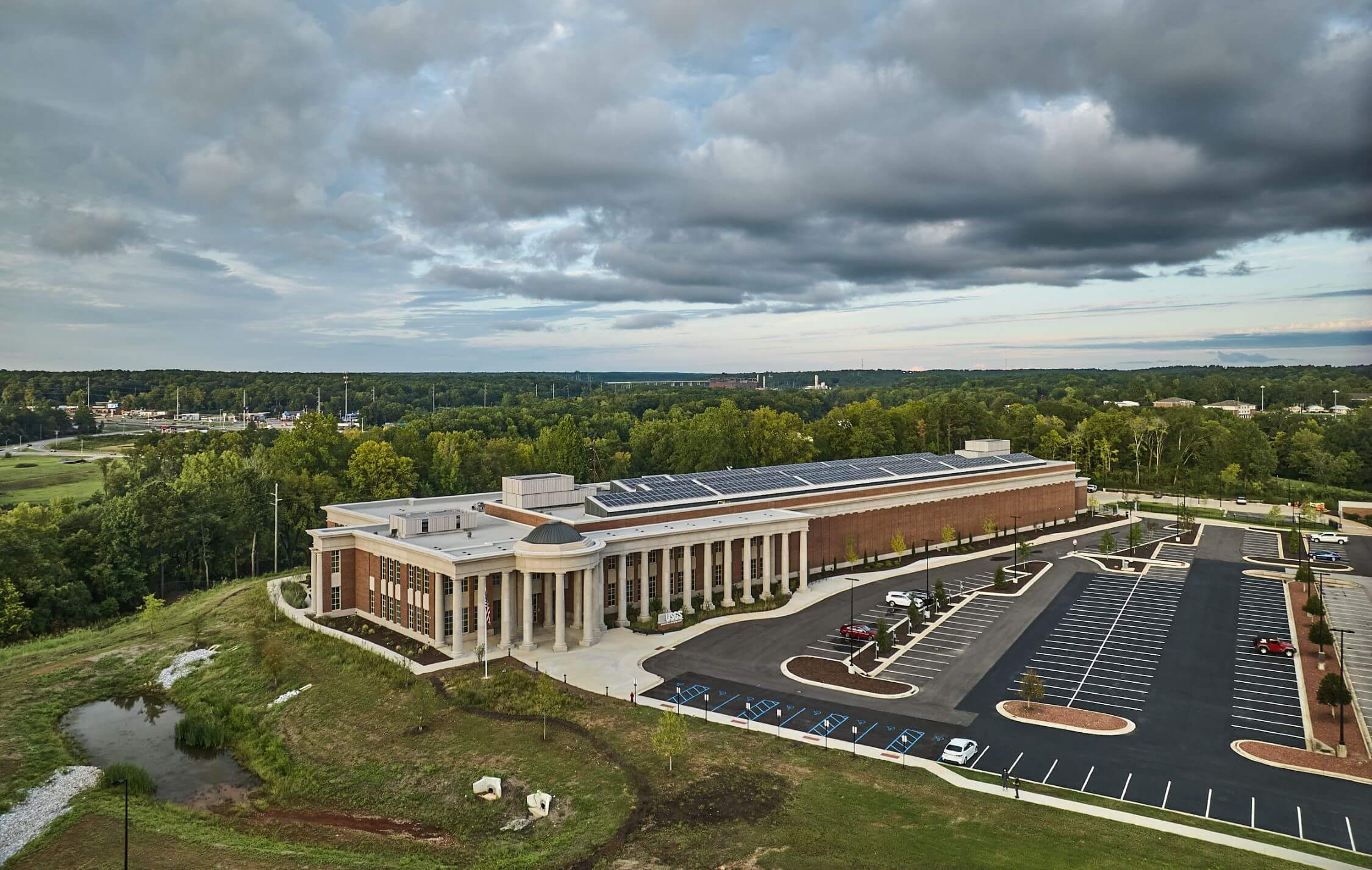
In addition to aesthetic considerations, the exterior incorporates mechanical screening to minimize the visual impact of mechanical and electrical equipment. Solar panels are angled low, and all mechanical equipment is concealed with roof screens, reflecting the facility’s commitment to blending form and functionality while respecting the campus’s visual integrity.
Main Entry and Lobby: Welcoming Innovation
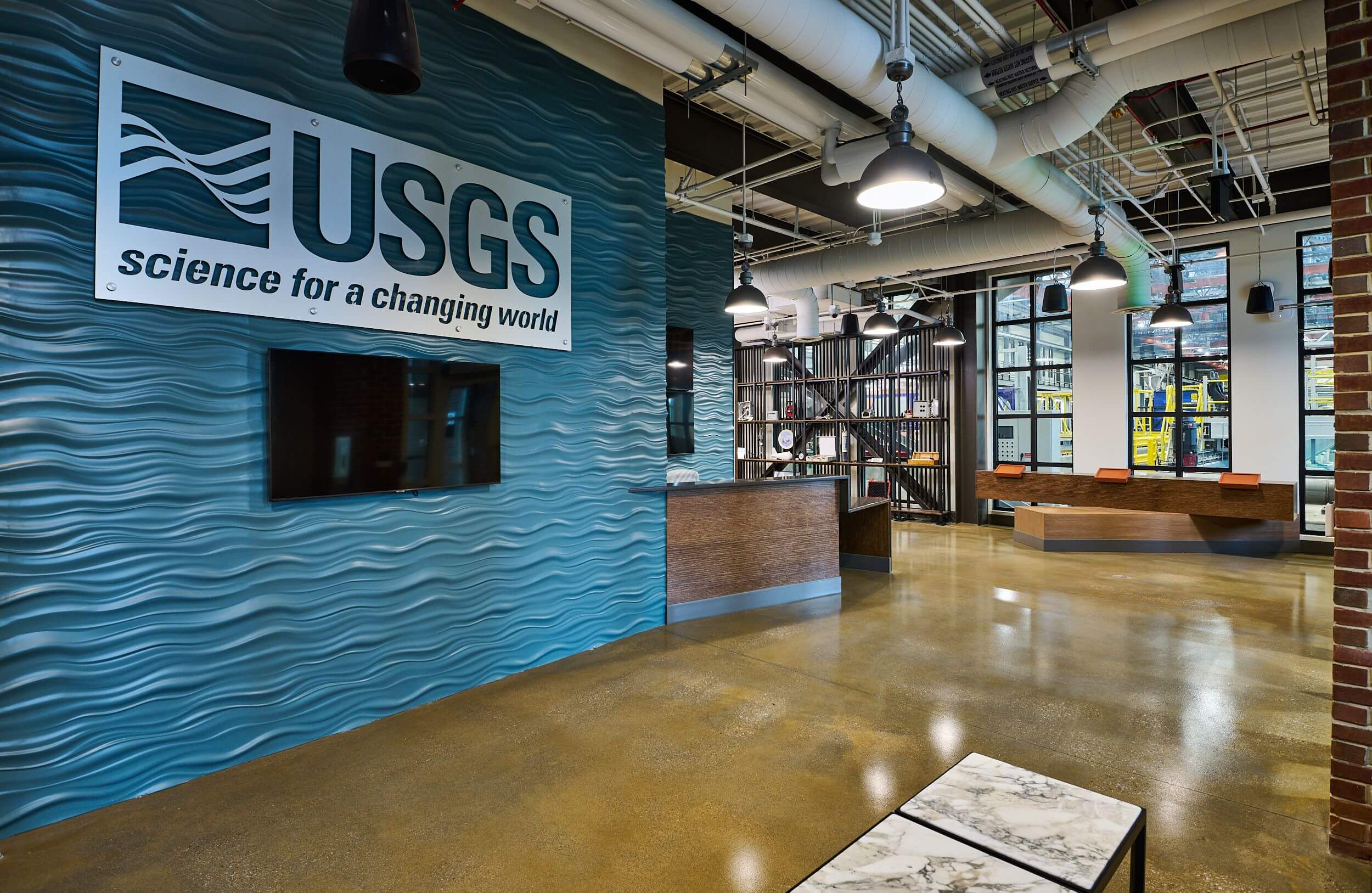
Visitors are greeted by a reception area featuring custom millwork, a quartz desk, a textured wave wall and digital displays showcasing the USGS updates and artwork. The space integrates functionality with a welcoming ambiance, setting the tone for the facility’s innovative spaces.
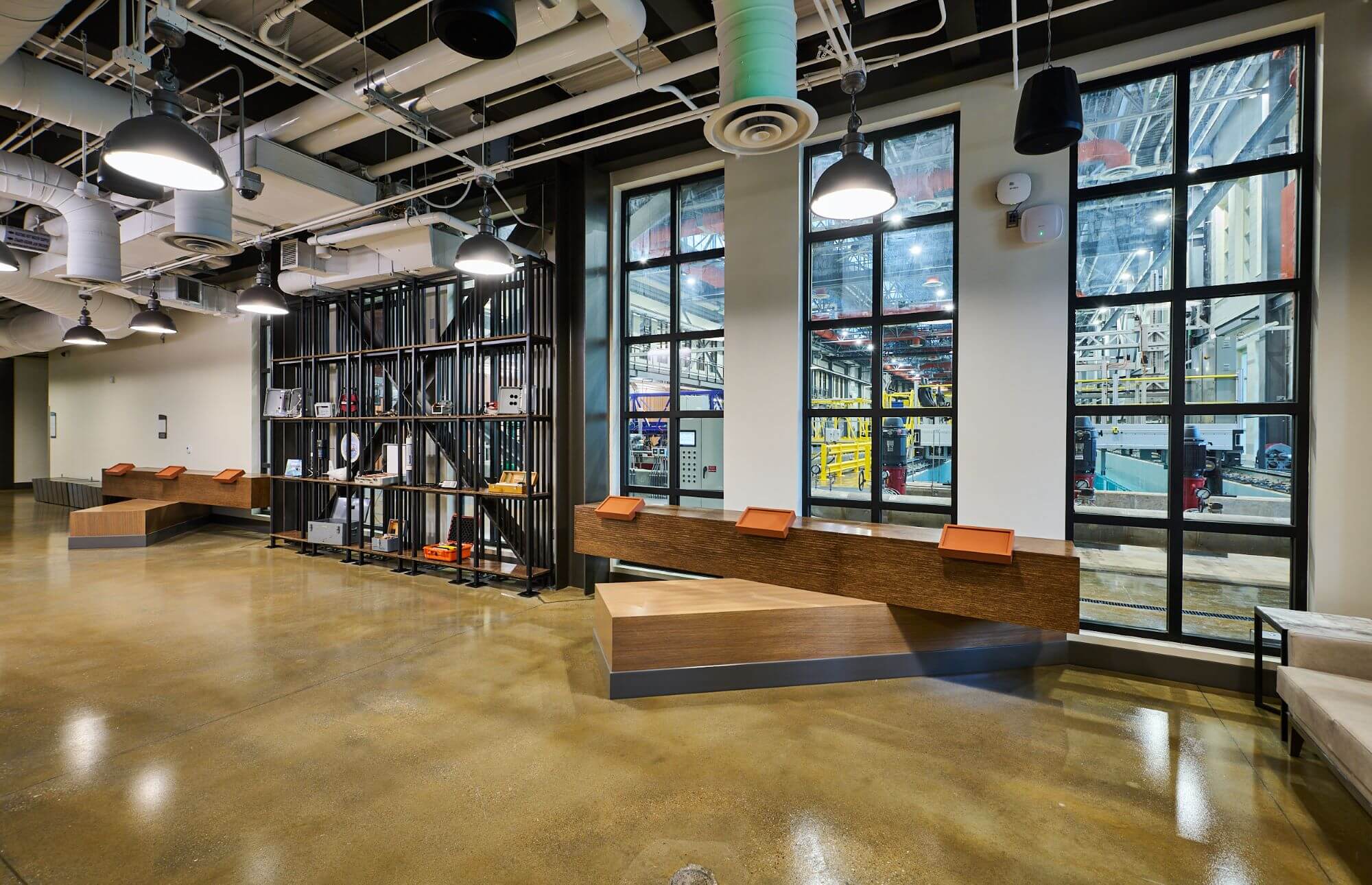
A display area houses USGS artifacts, highlighting the organization’s history. Strategically placed “peekaboo” windows offer glimpses into the hydraulics lab. These windows were born from value engineering studies focusing on maximizing visitor interest. The "peekaboo" effect allows visitors to view the science happening inside, sparking curiosity and encouraging exploration. An open staircase leads to the second floor, offering a bird’s-eye view of the lab, making the scientific process both visible and engaging.
Hydraulics Laboratory: The Heart of Water Science
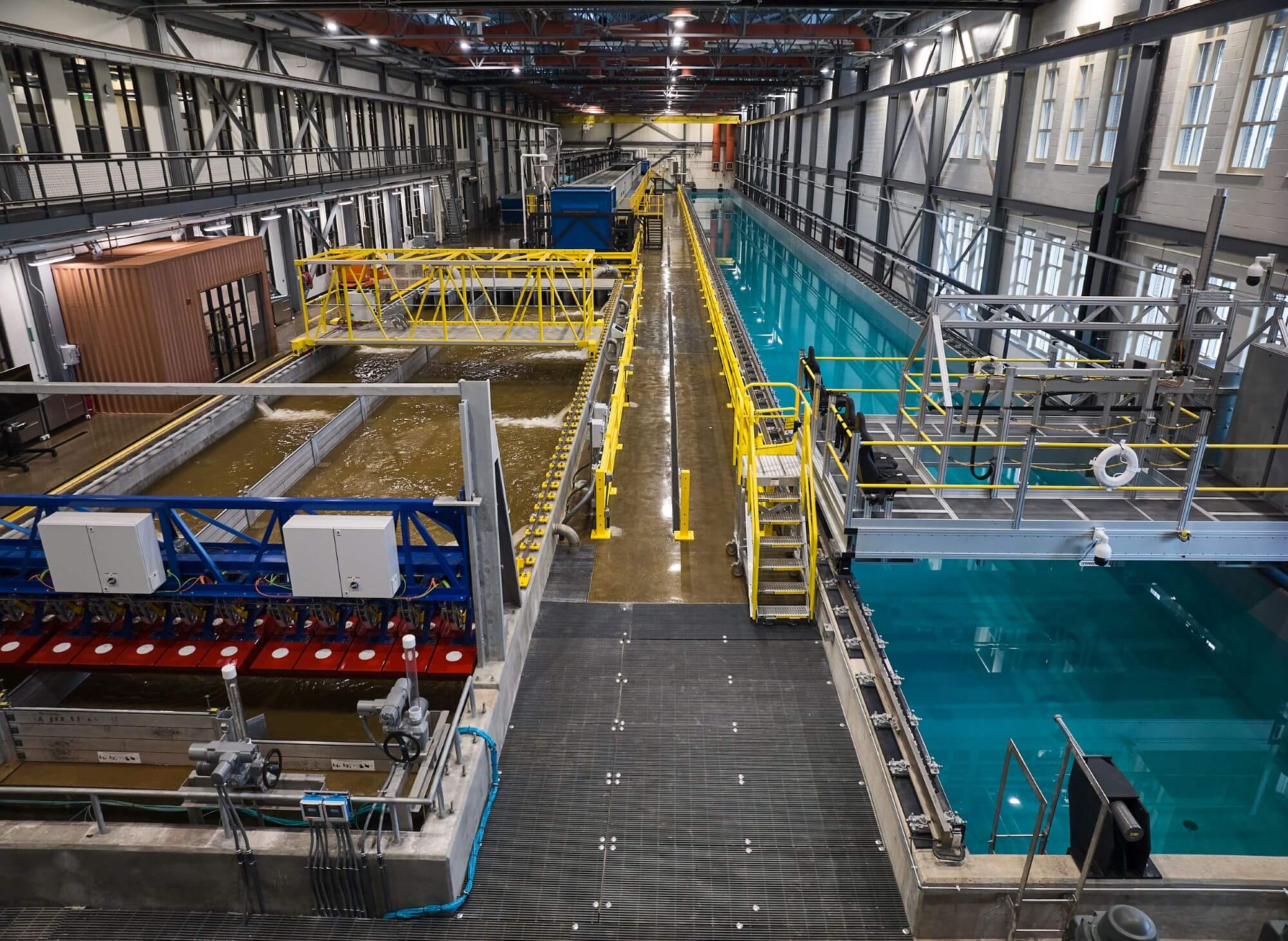
The core of the HIF is its hydraulics lab, a 32,000-square-foot facility with cutting-edge equipment such as a 350-feet-long tow tank, a 230-foot-long tilting flume, a test basin, a wind tunnel and Acoustic Doppler Current Profiler tank. A wave generator adds another dimension to this state-of-the-art facility. These features allow precise calibration and simulation of river and stream processes essential for advancing hydrologic science. Durability is supported by innovations like a marine coating system for test basins which protect against wear from water-based research.

The HIF includes groundwater wells, field testing spaces and an environmental testing chamber capable of temperatures from -40°F to 160°F. It also features an innovation lab with 3D printers for polylactic acid, metal and resin prototyping. Dedicated areas for testing, repairing and developing hydrologic equipment are available, along with a paint booth, welding area and an 11,000-square-foot warehouse for materials storage. The environmental testing chamber promotes robust equipment performance by maintaining extreme temperatures.
Building Spaces and Flexibility

In addition to the laboratories and training areas directly associated with research, administrative offices and a warehouse are incorporated in the HIF. The layout optimizes space, with the first floor housing the main lab and related workspaces and the second floor for classrooms and offices. Modular office walls allow for easy reconfiguration, extending the facility's lifespan and accommodating changes in technology and staff.
Educational and Collaborative Spaces
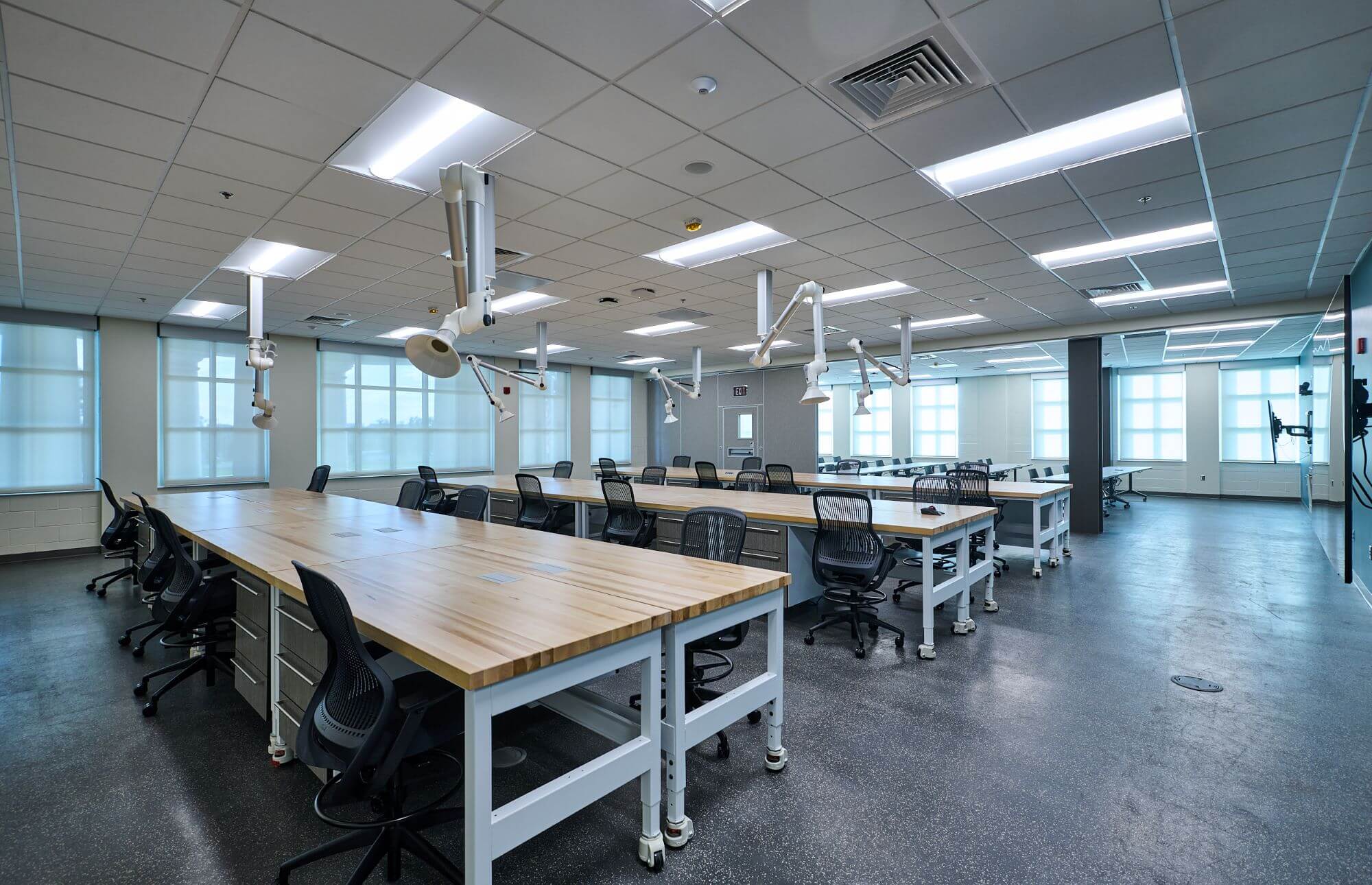
Training rooms are designed for versatility, accommodating wet chemistry and electronics training. A removable partition converts the space between classrooms and labs, allowing dynamic facility use.
The 150-person auditorium features stained wood veneer seating, perforated metal risers, quartz stair treads and decorative wood substrates. Exposed ceilings, with a perforated metal acoustical cloud over the stair seating and presentation area, further enhance the acoustics. The presentation area boasts a decorative wave-textured wall to complement the large auditorium monitor, with carpet tiles used on the floor for better acoustics.
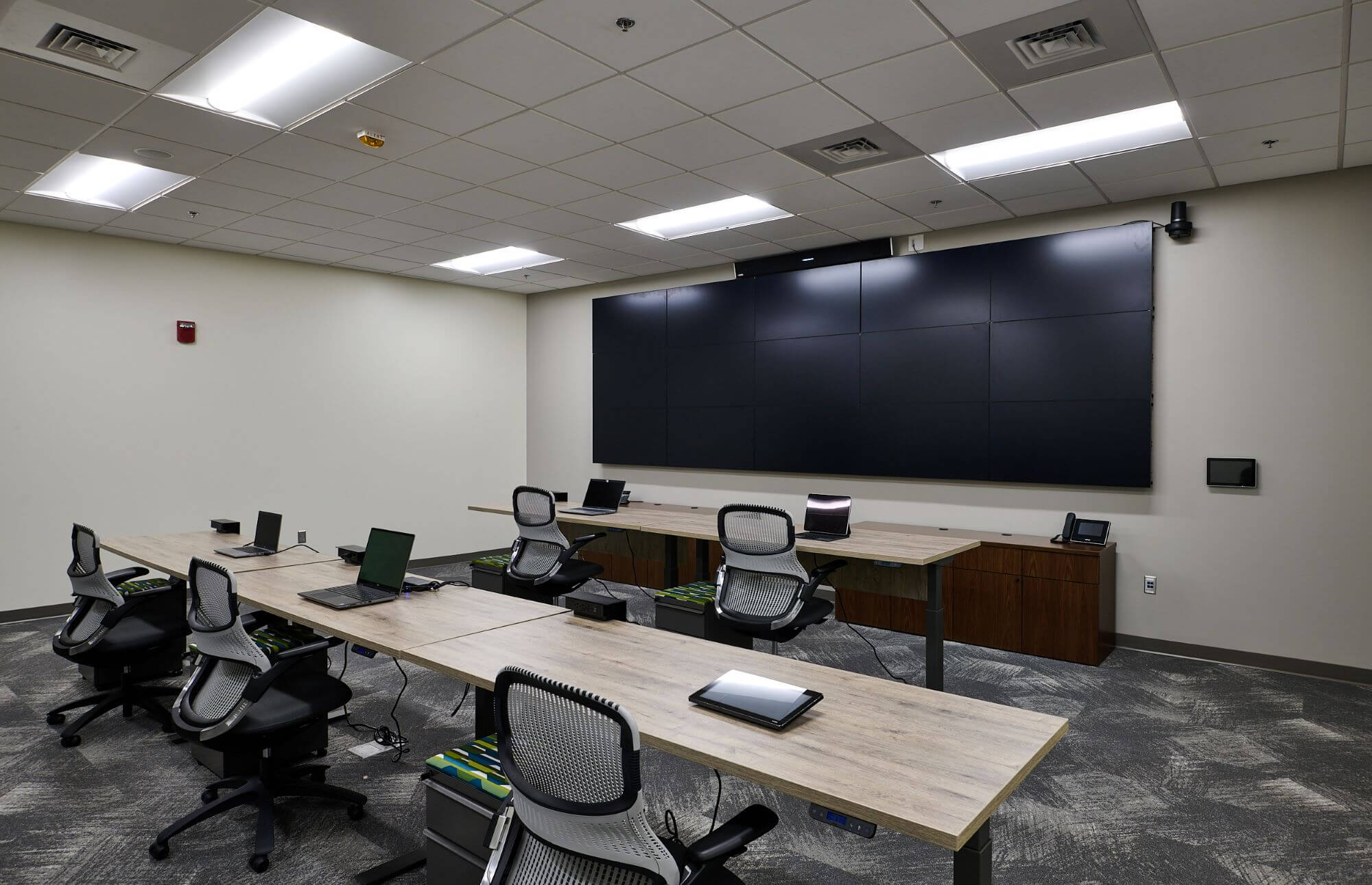
The network operations center provides a space central to the laboratories to monitor water events in real-time, supporting emergency responses and maintaining national coverage. During major flood events, real-time data from USGS monitoring stations informs emergency response and water resource management. Similarly, during periods of drought, this data helps manage water resources to maintain supply for critical needs while collecting long-term data to help understand and anticipate future water levels.
Sustainability and Environmental Control
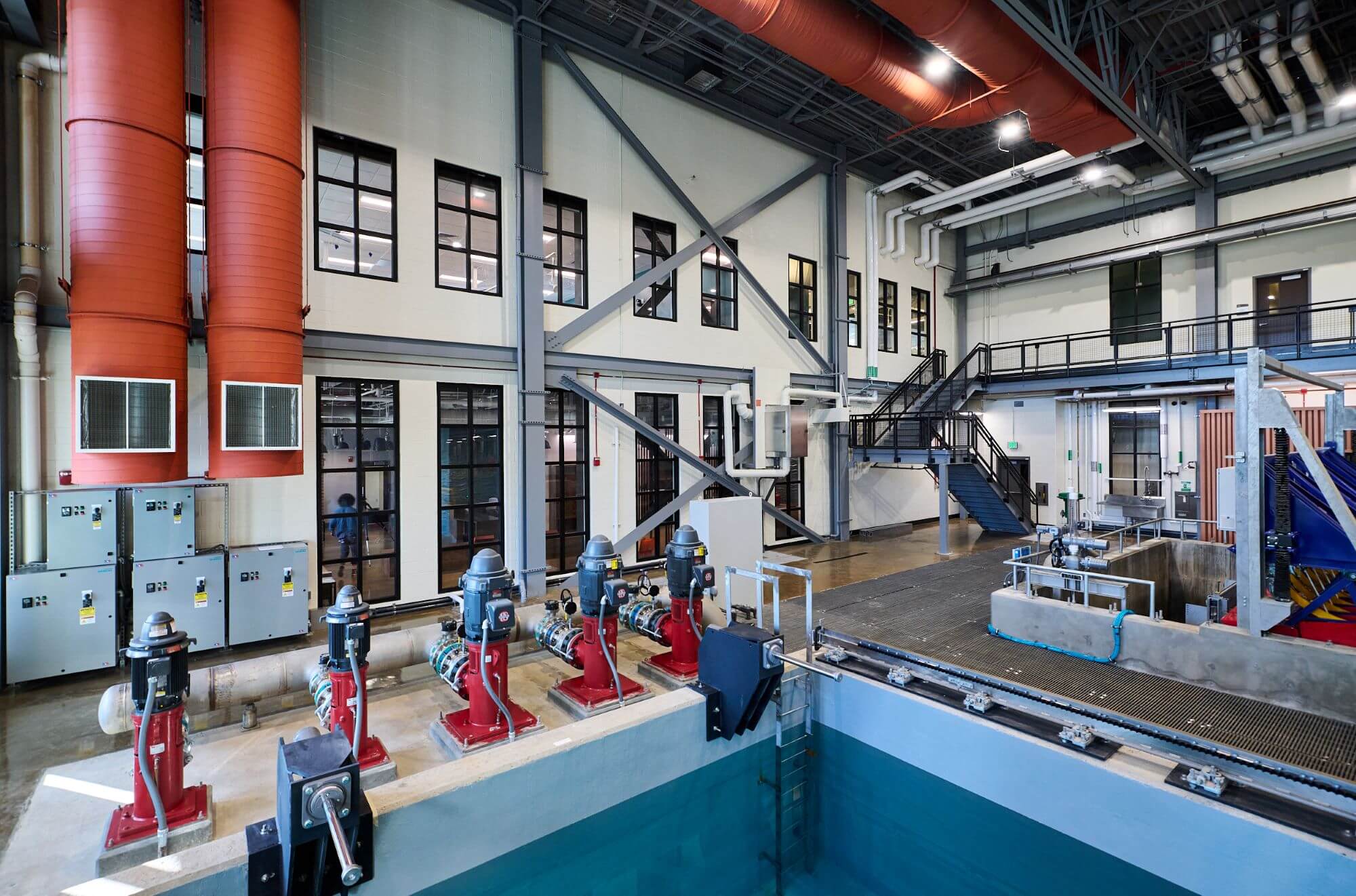
The HIF’s advanced HVAC system maintains optimal humidity throughout the facility, which is a challenge because of the difference in humidity level between the hydraulics lab and the rest of the building. The system uses both active and passive systems to manage humidity levels while helping to support energy-efficient operations.
Stormwater and Energy Management
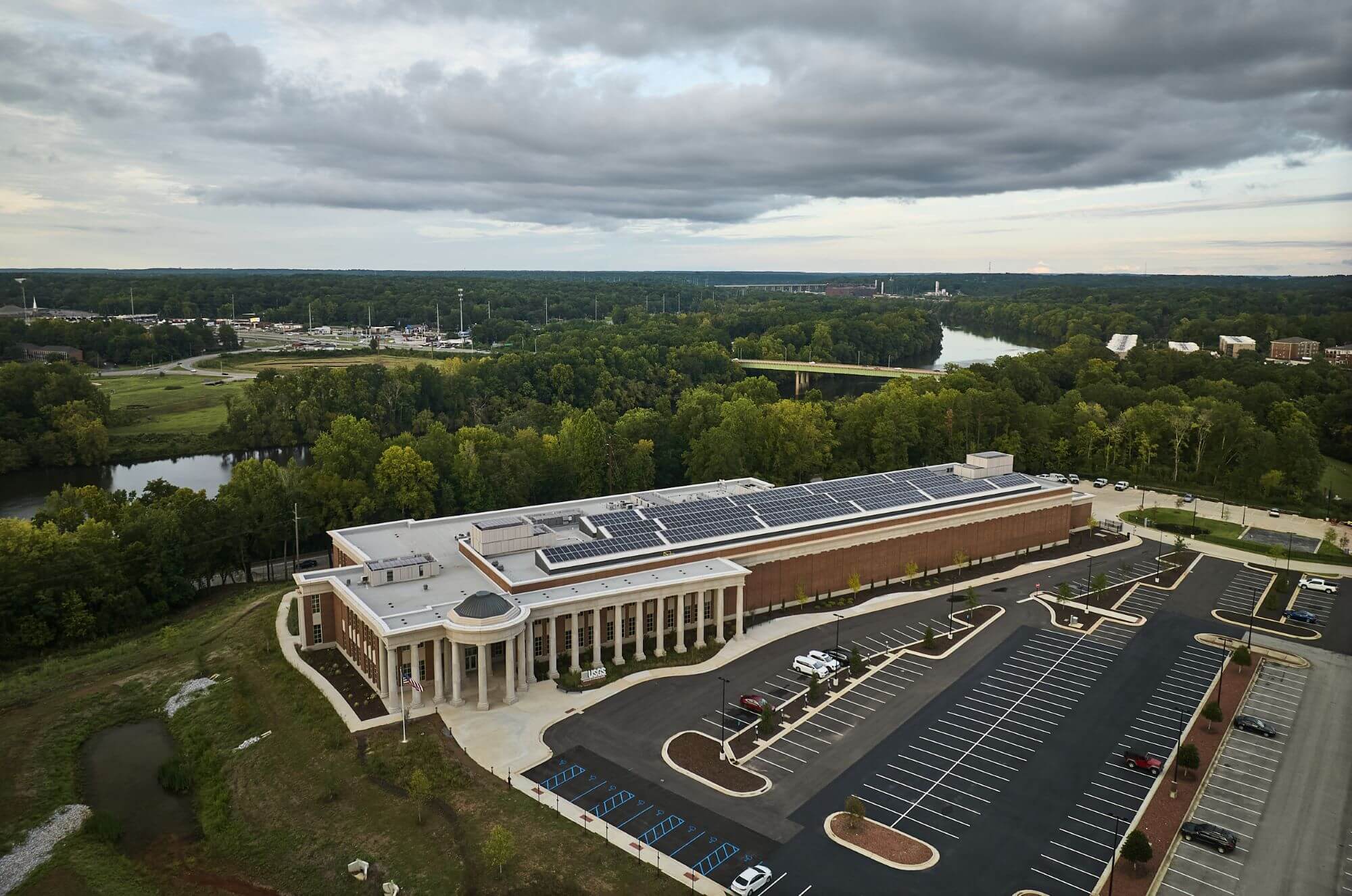
The HIF incorporates stormwater management strategies and other features that contribute to its overall sustainability. An on-site stormwater detention system collects site and roof drainage to be stored in underground basins. The roof houses a photovoltaic array of over 500 solar panels. Daylighting strategies reduce energy use while maintaining comfort, and light shelves protect spaces from solar gain, creating an energy-efficient environment.
Excellence in Architecture
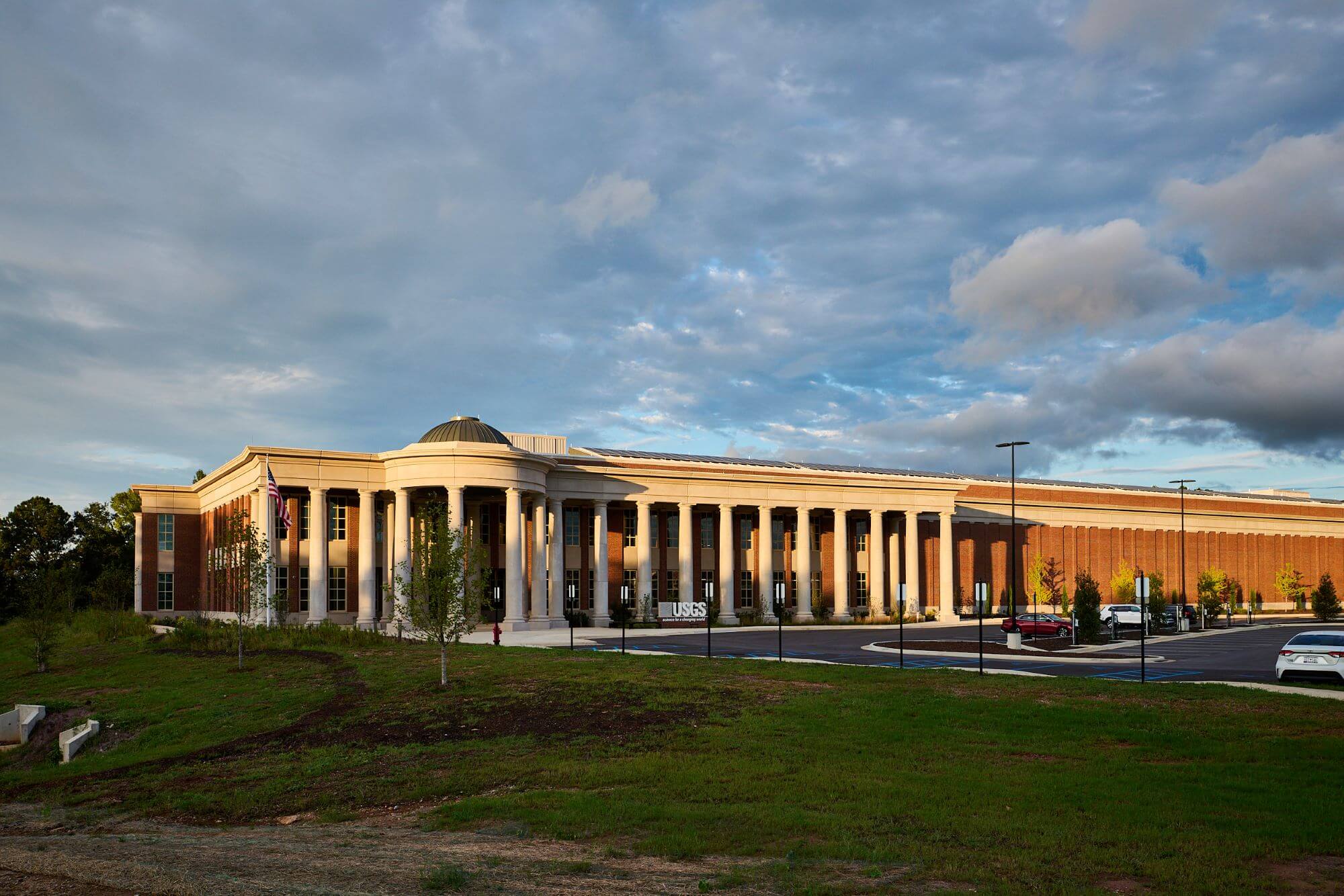
The HIF exemplifies the seamless integration of functionality, sustainability and innovation. From its cutting-edge labs to its welcoming public spaces, the facility exemplifies forward-thinking design in water science. As a long-term hub for research and collaboration, the HIF will continue to advance hydrologic innovation, ensuring sustainable management of the nation’s water resources for decades. For more information on the HIF and our other water and wastewater projects,
contact Stanley Consultants today!